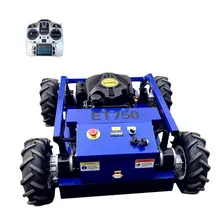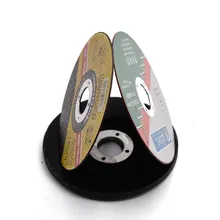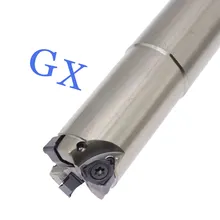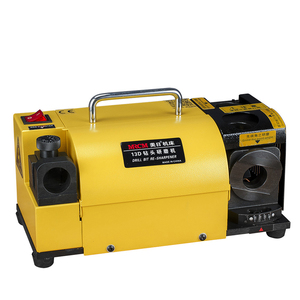What are Grinding Wheels
Grinding wheels are specialized tools used for finishing workpieces by removing material and smoothing surfaces. They are an essential component in various industries, including metalworking, woodworking, automotive, and construction. These wheels consist of an abrasive compound that can cut, grind, or polish metals and other materials with precision and efficiency.
The principle behind a grinding wheel is the use of friction and abrasion to remove material from a workpiece. When the wheel is spun at high speeds, the abrasive surface grinds against the material being worked on, wearing it down or reshaping it as desired. The effectiveness of a grinding wheel depends on several factors such as the type of abrasive used, the grit size, the wheel's bonding material, and its shape.
Grinding wheels are designed for professionals who require precise shaping and finishing of materials. They are commonly used by machinists, metal fabricators, construction workers, and artisans who need to ensure their work meets stringent specifications. These tools are also valuable for maintenance and repair tasks where surfaces need to be cleaned or restored to their original condition.
Types of Grinding Wheels
Grinding wheels come in various types to suit different applications and materials. Each type has unique characteristics that make it suitable for particular tasks:
Straight Grinding Wheels: These are the most common type of grinding wheel and are used for surface grinding, cylindrical grinding, and tool sharpening. Straight wheels have a simple, flat disc shape with a circular hole in the center for mounting.
Cup-Shaped Grinding Wheels: As the name suggests, these wheels have a cup or bowl shape. They are used for precision grinding in surface grinders where a high level of accuracy is required.
Diamond Grinding Wheels: These wheels feature diamond particles embedded in the bonding material for grinding very hard materials like concrete or stone. Diamond wheels maintain their shape over long periods and offer high performance in demanding tasks.
Cut-off Wheels: Also known as parting wheels, cut-off wheels are designed to cut materials with minimum material loss and are typically thin to reduce resistance during cutting.
Flap Discs: These consist of overlapping small pieces of sandpaper arranged around a central hub. They offer a combination of grinding and finishing in one step and are often used on metal surfaces.
How to choose Grinding Wheels
Selecting the right grinding wheel for your business involves understanding the specific needs of your operations and the materials you work with. Here are some considerations:
Material Compatibility: Different abrasive grits are suited for different materials. For example, aluminum oxide is generally good for steel, while silicon carbide works well on nonferrous metals.
Grit Size: The size of the abrasive particles affects the finish of the workpiece. Coarser grits remove more material but create rougher surfaces; finer grits produce smoother finishes but remove less material.
Bond Type: The bonding agent holds the abrasive grains together. Choices include resin, ceramic, or rubber bonds; each has distinct properties that influence wheel life and performance.
Wheel Shape and Size: The shape of the wheel should match the contours of your workpiece for optimal interaction. Also, ensure that the wheel size is compatible with your grinding machinery.
Best Grinding Wheels on Alibaba.com
Alibaba.com stands out as a global marketplace offering an extensive selection of grinding wheels suitable for various industrial applications. Customers have access to a multitude of suppliers providing customized support options such as OEM and ODM services. This ensures that businesses can find products tailored to their specific requirements.
The assortment available on Alibaba.com spans across numerous applications—from deburring to precision grinding—and includes products suitable for all types of materials including metals, stone, concrete, and more. Furthermore, Alibaba.com's Trade Assurance service provides peace of mind by safeguarding payments until order delivery is confirmed.
For businesses looking to source reliable abrasive tools efficiently and at scale, Alibaba.com offers an unparalleled platform where quality meets convenience. With advanced search features allowing buyers to filter products by application, shape, material type, and more—finding the right grinding wheel becomes a streamlined process. This commitment to facilitating trade while prioritizing customer satisfaction makes Alibaba.com an excellent choice for businesses seeking dependable partners in their supply chain.
Common FAQs for Grinding Wheels
What materials can grinding wheels work on?
Grinding wheels can work on a variety of materials including metals such as steel and aluminum, nonferrous metals, stainless steel, stone, concrete, and even certain ceramics and glass.
How do I determine the right abrasive for my grinding wheel?
The choice of abrasive in a grinding wheel is determined by the material it will be used on. Aluminum oxide is commonly used for ferrous metals, while silicon carbide is better suited for nonferrous metals, ceramics, and stone.
What does the grit size on a grinding wheel mean?
The grit size of a grinding wheel indicates the size of the abrasive particles. The lower the number, the coarser the grit; higher numbers indicate a finer grit size for more detailed work.
Can grinding wheels be used for both cutting and grinding applications?
While some grinding wheels can perform both cutting and grinding functions, it is essential to select the right wheel type for the job as cut-off wheels are specifically designed for cutting with minimal material loss.
What safety precautions should be taken when using grinding wheels?
Safety precautions for using grinding wheels include wearing appropriate personal protective equipment (PPE), ensuring proper installation of the wheel, maintaining correct operating speeds, and using guards on grinding machinery.
How long do grinding wheels last?
The lifespan of a grinding wheel depends on factors such as the abrasiveness of the material being worked on, frequency of use, pressure applied during grinding, and proper storage and handling of the wheels.
Are there different shapes of grinding wheels available?
Yes, there are various shapes available including flat discs, cup-shaped wheels, cylindrical types, and others like dish or depressed center wheels to suit different applications.
Can I customize my grinding wheel according to specific needs?
Many suppliers offer customized support such as OEM and ODM services to tailor grinding wheels to your specific needs regarding shape, size, bonding agent, and abrasive type.
What is the purpose of different bonding agents in grinding wheels?
Different bonding agents provide varying degrees of hardness and wear resistance. For instance, resin bonds offer good flexibility while ceramic bonds provide long life and fast cutting.
How do I choose between a coated or bonded abrasive?
Coated abrasives are typically used for irregular surfaces and jobs requiring a finer finish, while bonded abrasives are suitable for precision cutting and high-pressure applications.
What applications are flared cup grinding wheels best suited for?
Flared cup grinding wheels are often used in snagging operations to remove burrs from castings or imperfections from forged parts. They offer a wide surface contact area for efficient material removal.
How does wheel type impact performance in different industries?
Wheel type impacts performance based on industry requirements—for example, cut-off wheels are essential for metal fabrication, while diamond cup wheels are preferred in masonry for their durability.











































 浙公网安备 33010002000092号
浙公网安备 33010002000092号 浙B2-20120091-4
浙B2-20120091-4